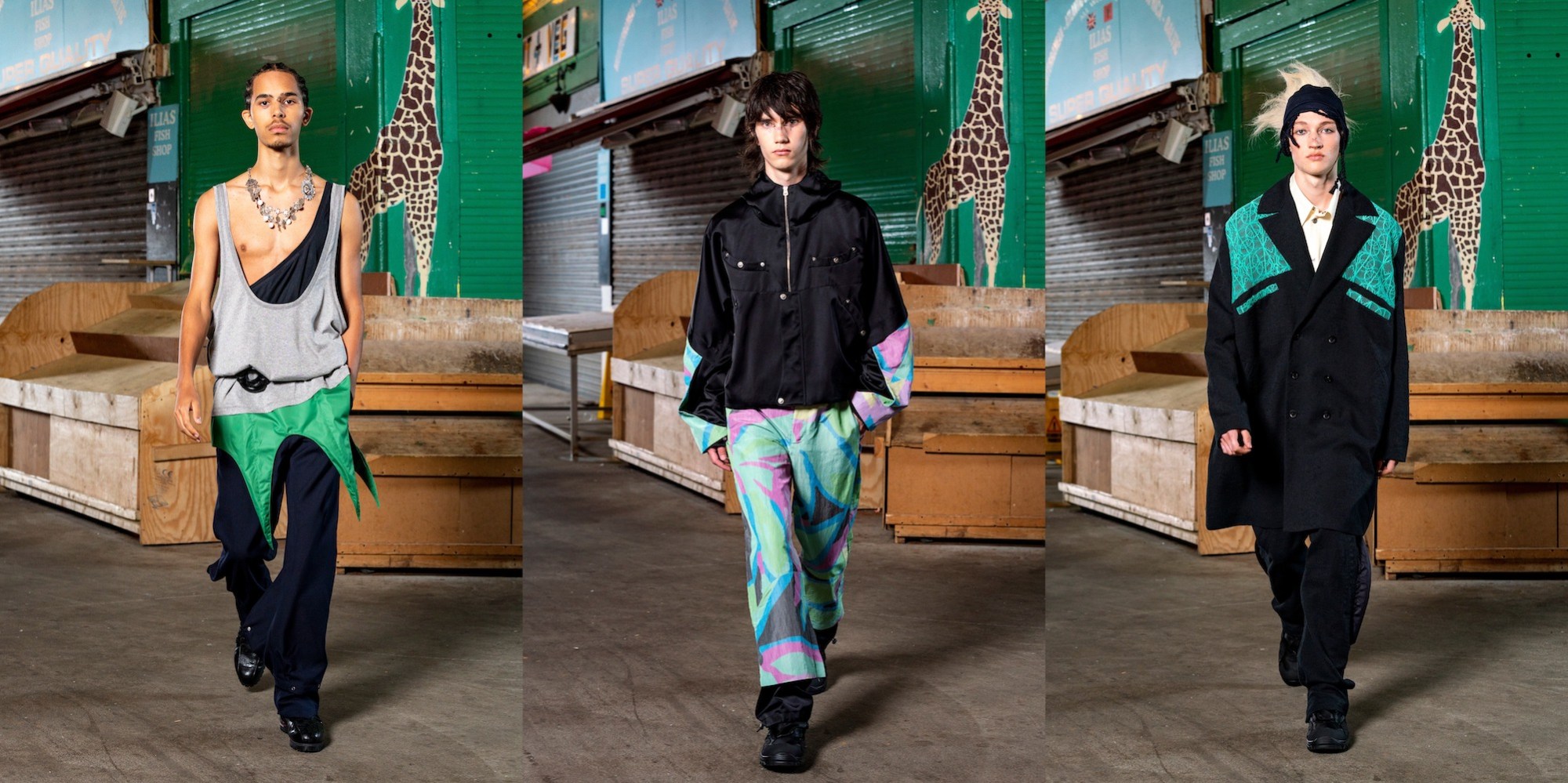Travel has long served as a vital source of inspiration for Kiko Kostadinov. As such, the past year and a half that he’s spent confined to north London has been a bit of a challenge. Last season, like most of us, the experience of confinement lead him to embark on voyages of the mind, delving headlong in bucolic 70s travel chronicles and leftfield vintage sci-fi. Today, though, in Yesternow — his SS22 menswear collection — his reflections on the meaning and value of travel took on a rather more personal tone.
“When you travel, whether it’s to Japan or to Paris, to do a showroom or show or just to visit, you really gather energy from the people you meet along the way,” Kiko reflects. “I couldn’t do that this season, though, I had to really dig into my own past and try to remember the things that struck me, that made me who I am in some way.”
While combing his home for inspiration, one such thing that he happened upon was a hand-painted, glazed terracotta tea set by artist Nikolay Diulgheroff, a prominent figure of Italian Futurism’s second wave. Futurism being a movement that Kiko has harboured a career-long obsession with, he was immediately drawn to its acid-hued concentric forms, even if Diulgheroff’s name wasn’t one he knew at first sight. “I immediately recognised it as Eastern European though,” he recounts, “but it wasn’t until I did some further research that it transpired that he was actually a Bulgarian artist who moved to, and worked in, Italy, and he was heavily inspired by Giacomo Balla,” the movement’s effective founding father.
It’s a trajectory that almost reads a historical precursor to that of Kiko, who, since leaving his native Bulgaria, has hardly looked back since. “I immediately related because I don’t really go back home and I don’t really engage with promoting my work there,” he says, drawing similar links with the story of fellow countryman and artist Christo, who escaped to Paris in the 1950s. “I think he had a similar relationship with Bulgaria to me. I think we both felt that we were almost forced to leave in pursuit of a better life elsewhere.”
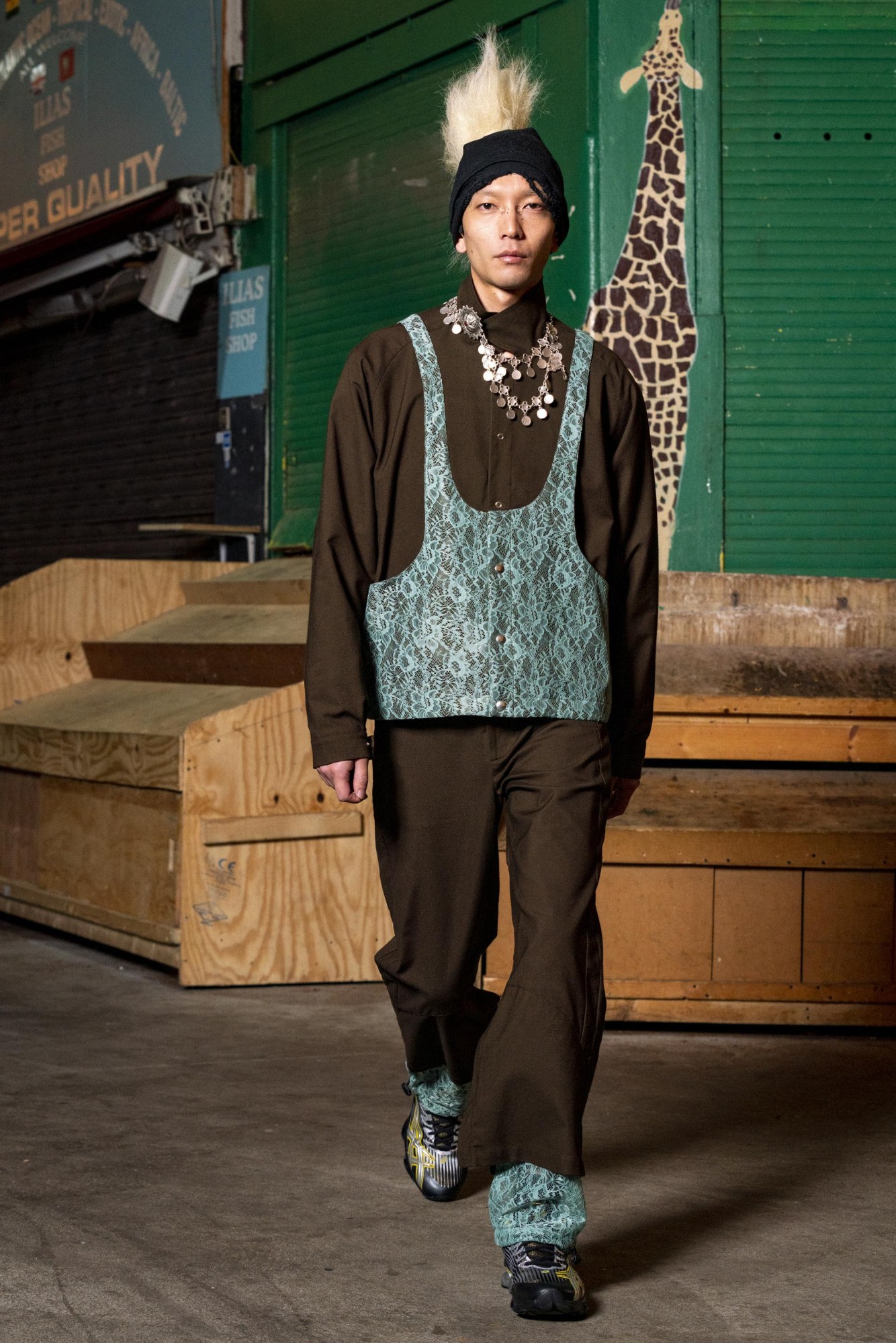
The same can be said for all the members of the Kiko Kostadinov studio, a veritable poster unit for what London’s celebrated internationalism looks like at its best. “We’re from Japan, Australia, Bulgaria, Korea, Spain, Italy…” he lists, “and everyone has moved from where they were to pursue their passion here in London.” Naturally, in the increasingly acrimonious cultural climate brought on by Brexit, thoughts around what it means to freely move between spaces, and for that freedom of movement to be curtailed, weighed on the designer’s mind.
Now, anyone expecting a blunt articulation of these ideas will be disappointed. Here, in typical Kostadinovian fashion, the movement of bodies across borders and spaces, and the work of Futurist artists like Giacomo Balla, serve as figurative undercurrents rather than as over overt points of reference.
The whirring dynamism of Balla’s paintings, particularly his early masterpiece ‘Dynamism of a Dog on a Leash’ (1912), are nodded to in the cut of abbreviated shorts fringed with jagged nylon fronds that flutter when walked in. Elsewhere, the artist’s personal style, particularly his eccentrically decorated waistcoats, are suggested by deep-cut overlays in patchworked denim, teal floral lace and polychrome polysatin, layered over wrap jackets and heavy black overcoats. In the case of the latter piece, these jazzy accoutrements fold away into concealed compartments to give a slick monochrome look, a trick that’s echoed in the bright sleeve shields that descend from the elbows of heavy black satin jackets.
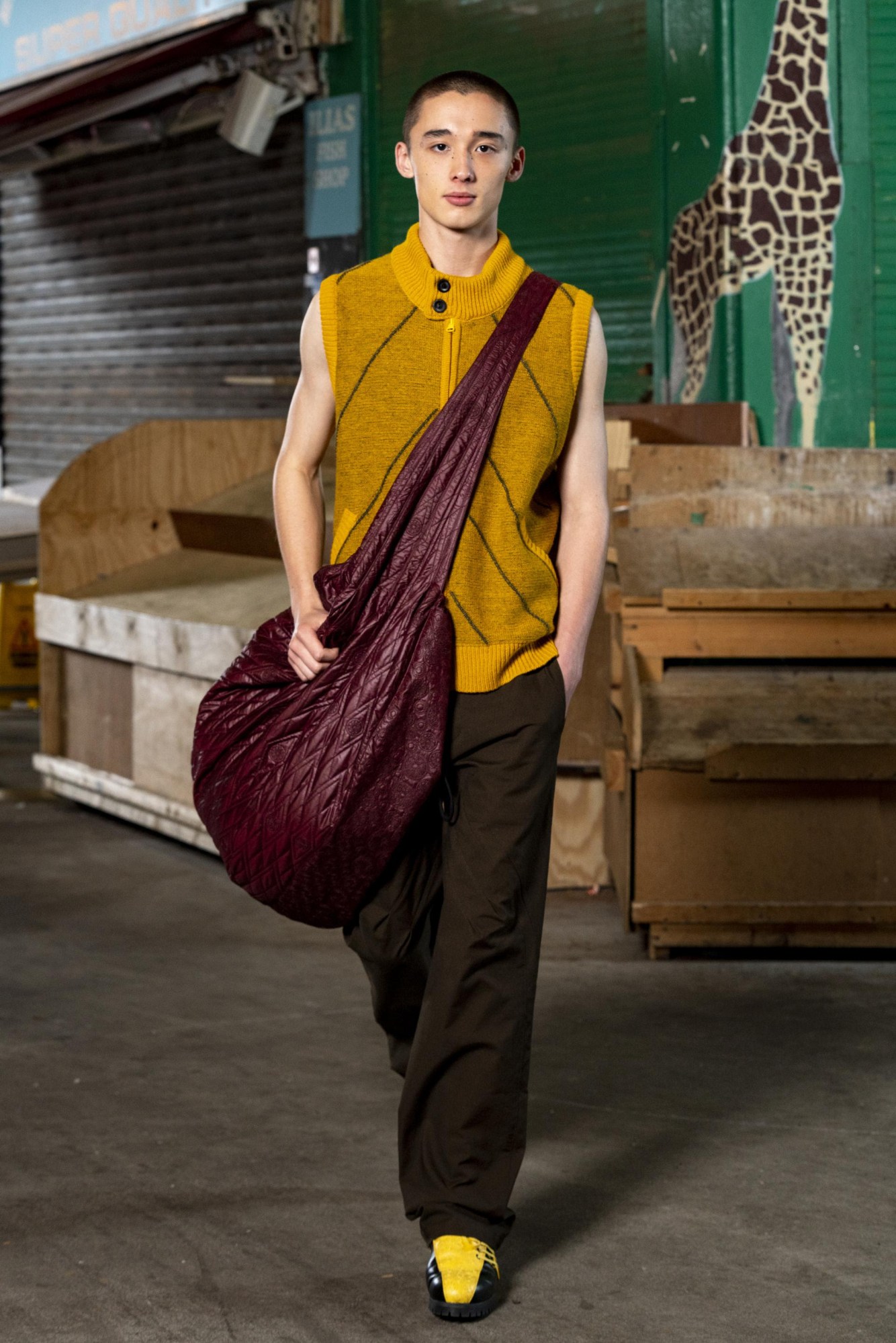
In light of the collection’s migratory theme, you can’t help but think that the pieces imply the delicate relationship that any member of a diaspora must navigate; the one between expressing the culture of one’s place of origin and adjusting oneself in an attempt to assimilate. “Everyone that comes to a new place, even if you’re just moving from a small town to the capital, tries to adjust themselves to whatever’s relevant to that place,” Kiko says. “What you might wear in one place could be considered dated or inappropriate in another, so you try to adapt to fit in.”
Where the real joy of Kiko’s clothes lies, though, is that if you want to dive into the cerebral intricacies they propose, you can. And if you don’t, you can instead just take them at surface level and indulge in them as ingeniously playful, modular clothes. Trousers, for example, can be worn with snap-on cuffs that swallow the wearer’s shoe, and are cut with jutting calves that convey a jaunty sense of dynamism. If that’s too much for you though, they can just as easily be snapped back to yield a straight-leg silhouette.
Playfulness also shines through in this season’s habit of showing skin, something that Kiko first started doing last season with the introduction of jumpsuits with sensuous shoulder blade slashes — which return this season as abbreviated bombers. Here, though, Kiko has offered up bona fide uniforms for the Hot Boy Summer you’ve already heard us speak so much of — nipple-grazing tank tops modelled on body-builder singlets with doubled straps and spiky, frilled hems, low slung banded knits, and diaphanous tailoring in delicate, bridal-white lace.
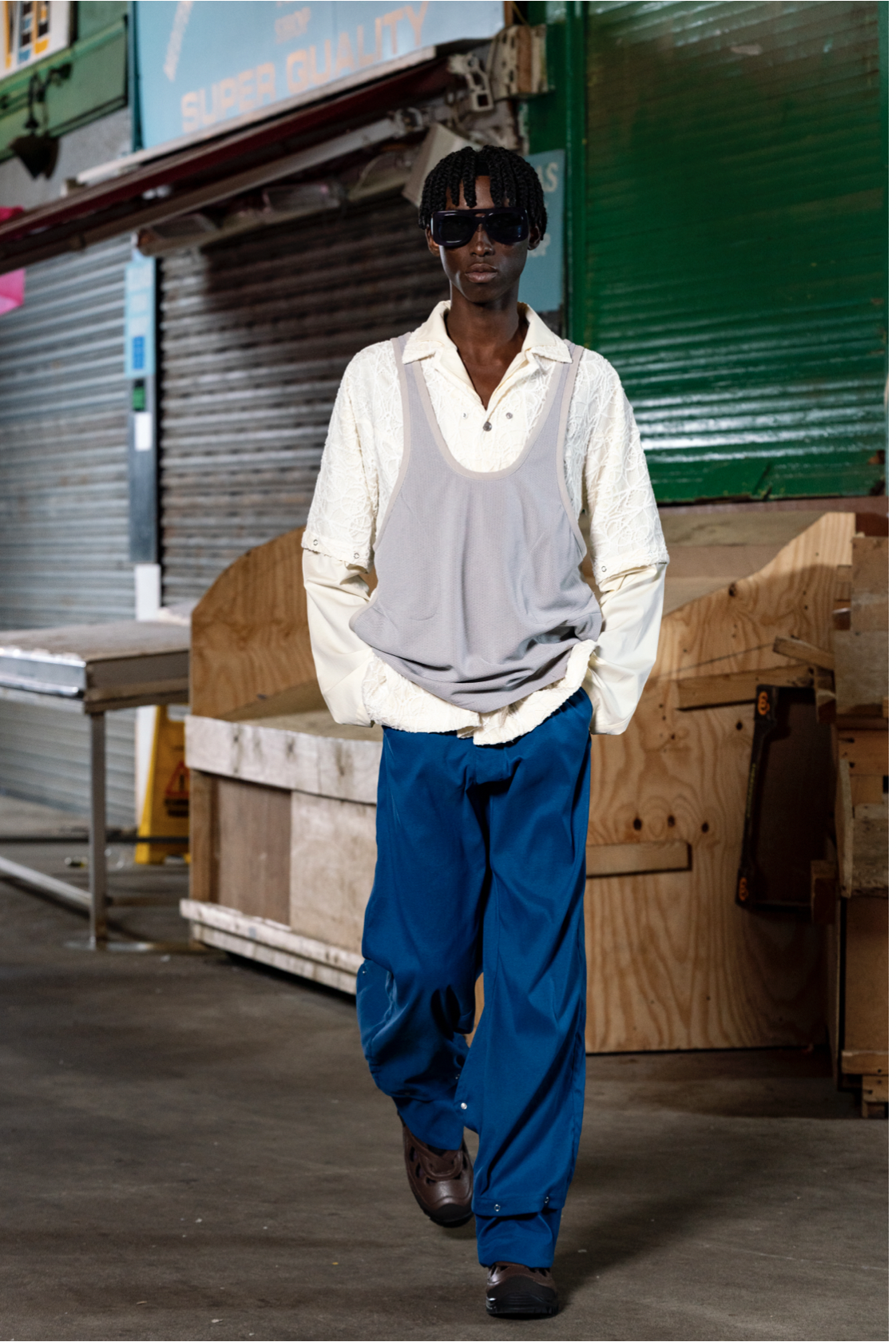
Pieces like these may sound a little more carnal than you may have come to expect from the designer, but it’s worth noting that this is perhaps his most streamlined, approachable collection to date. Those who fell for Kiko’s work for its nuanced take on colour and contrast won’t be disappointed, but he’s also made a concerted effort to satisfy the appetites of those looking for something a little more discreet. “I really tried to balance it out, this season. There’s a lot of navy and black, which isn’t really something I’ve done much of before — especially for Spring/Summer, I usually go crazy with the colour!” he chuckles. “When you see a piece on a computer screen, you think ‘Oh, there’s an opportunity to put some white panels here!’ But this time I said, ‘No, let’s just make it one colour, it’s not a colouring book!”
It’s indicative of a fresh maturity in his approach, as well as of his awareness of the ever-increasing scope of his audience. “We love the more developed pieces, and we wanted to keep that spirit here, but then also make something that people who aren’t necessarily in fashion will want to wear” — something that directly communicates a sense of real-world wearability.
If you need any further convincing, then the collection’s presentation film — an immersive walk-through of Brixton Market that draws inspiration from the “physical cinema” of Canadian artists Janet Cardiff and George Bures Miller — does just that. In a surreal, narrated tour of the South London market, an iPhone playing a video of models loitering in its empty lanes is played over another shot of the location, bustling by day. As uncanny an impression as it may give, there’s nonetheless a sense of buoyancy and life to it. After seeing much of Kiko’s work cast in purposefully abstract settings over the past few seasons, this felt like a welcome contextualisation of the designer’s vision in a world we’re all itching to get back out and explore.
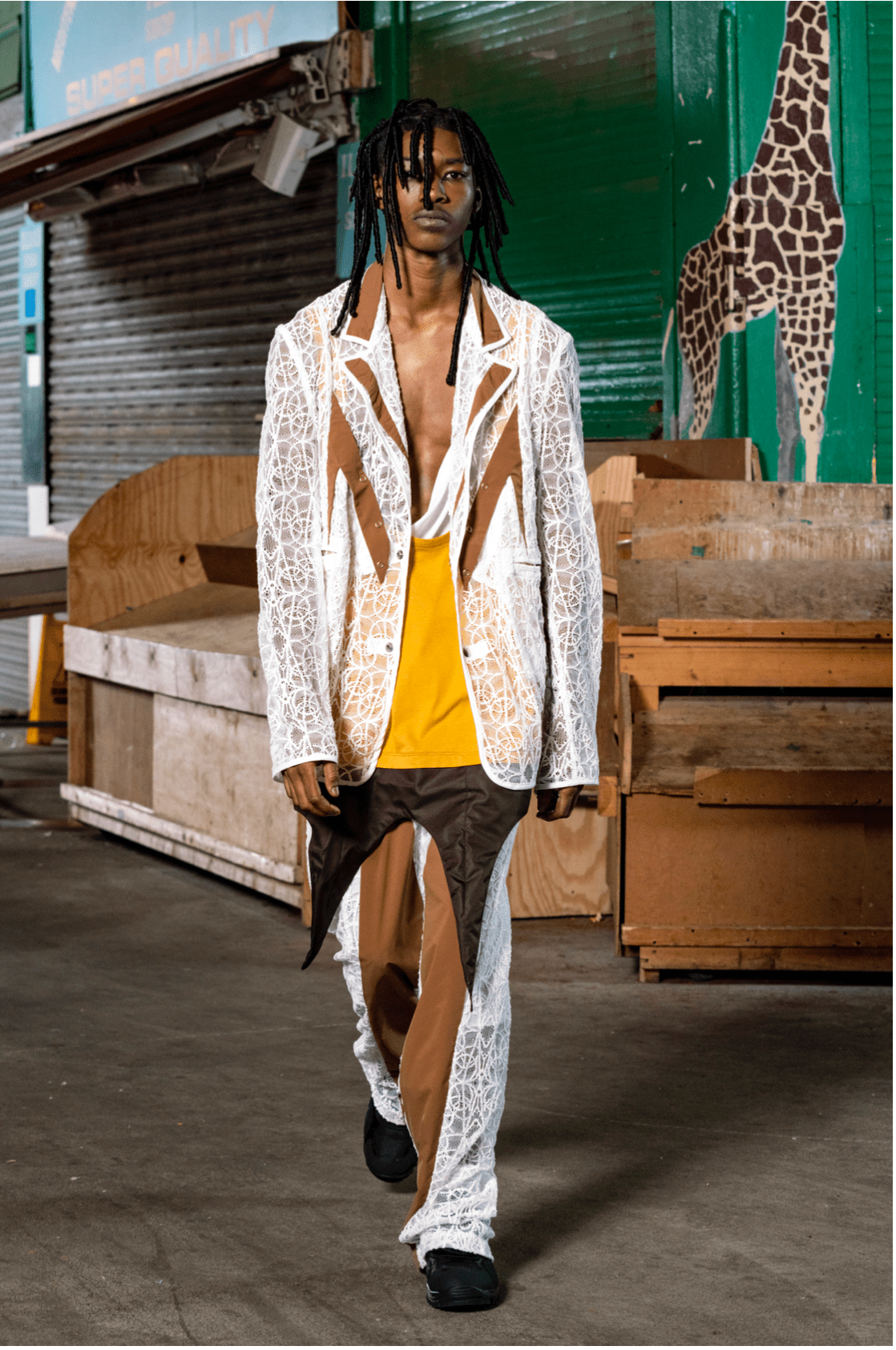
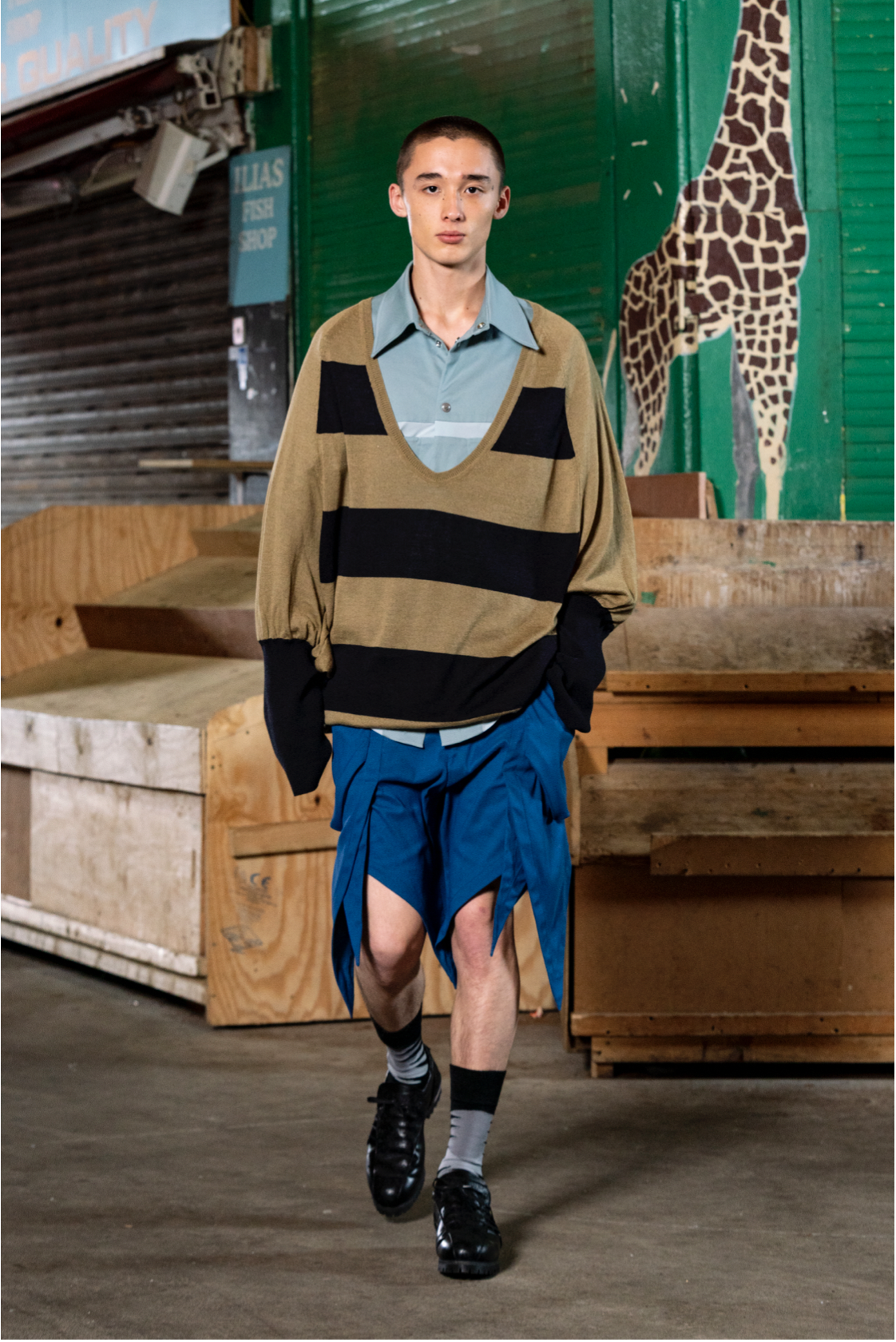
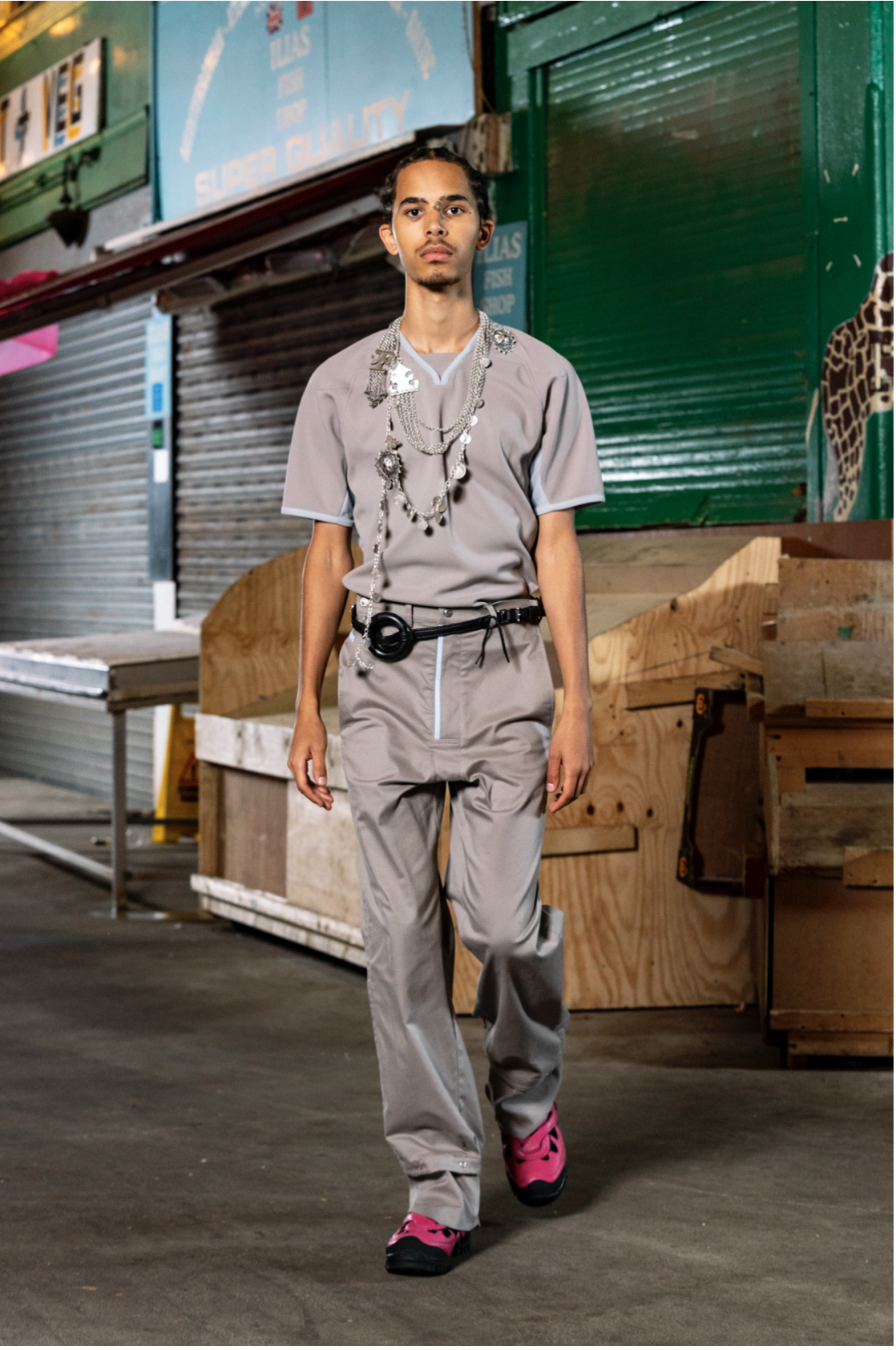


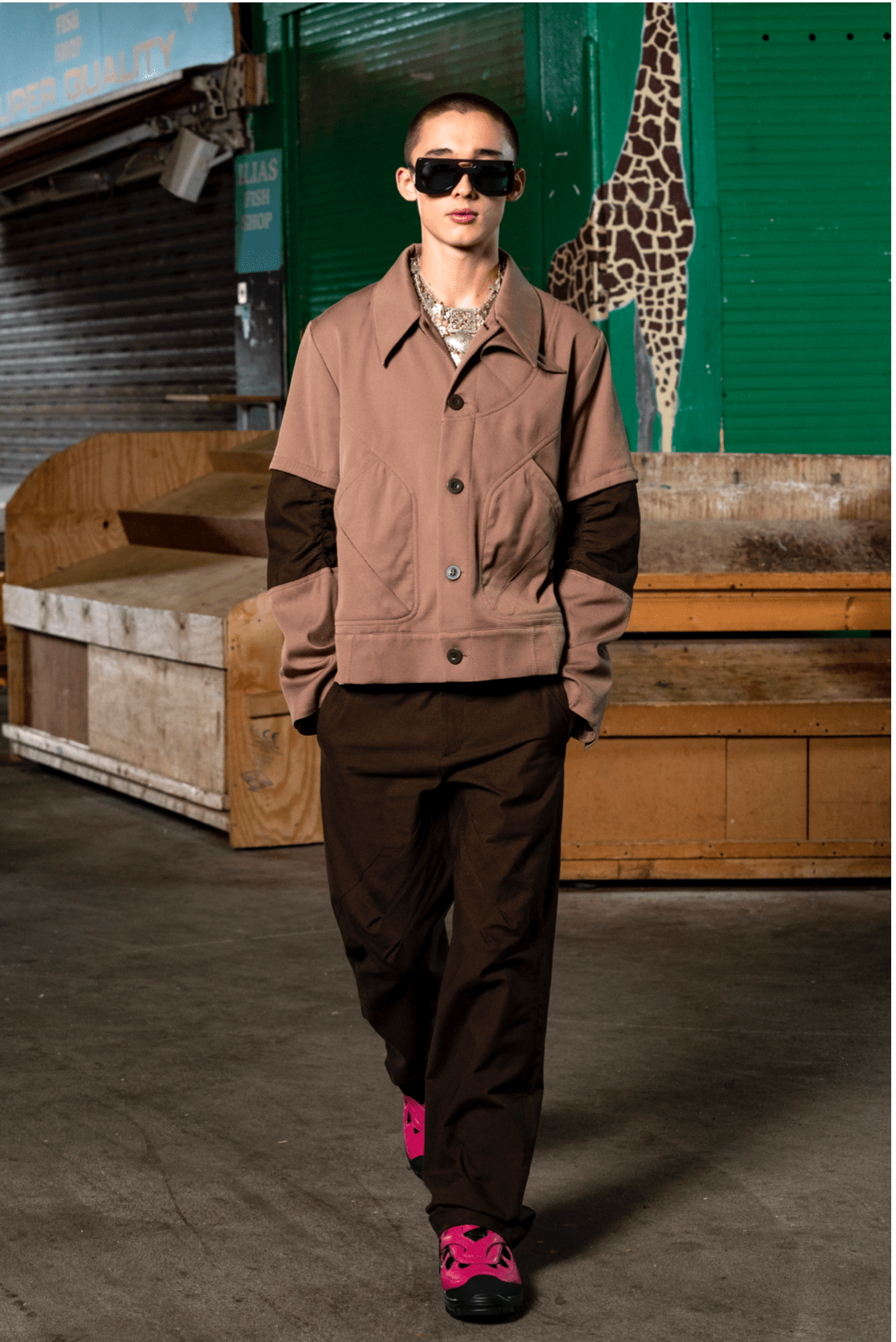
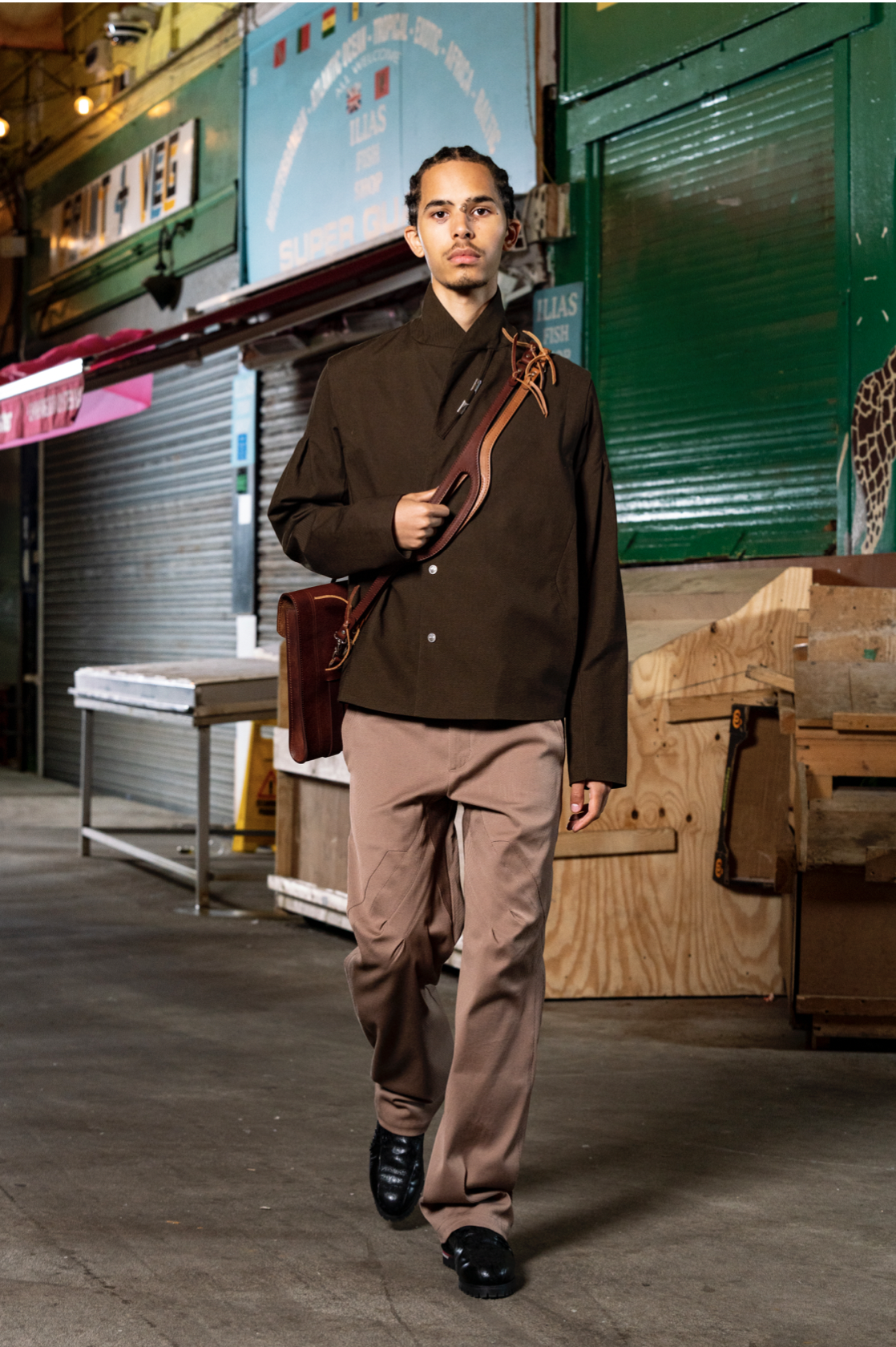
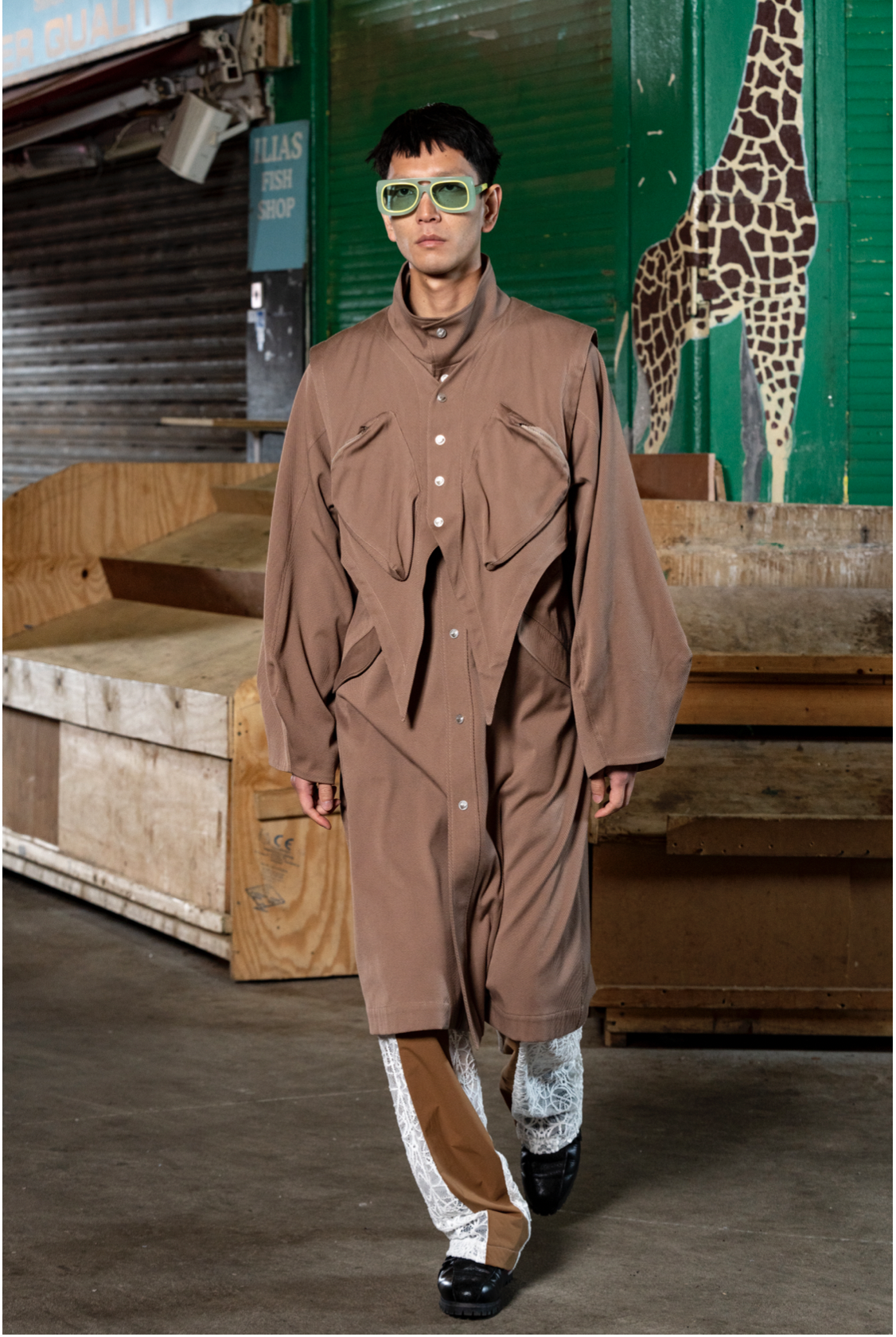

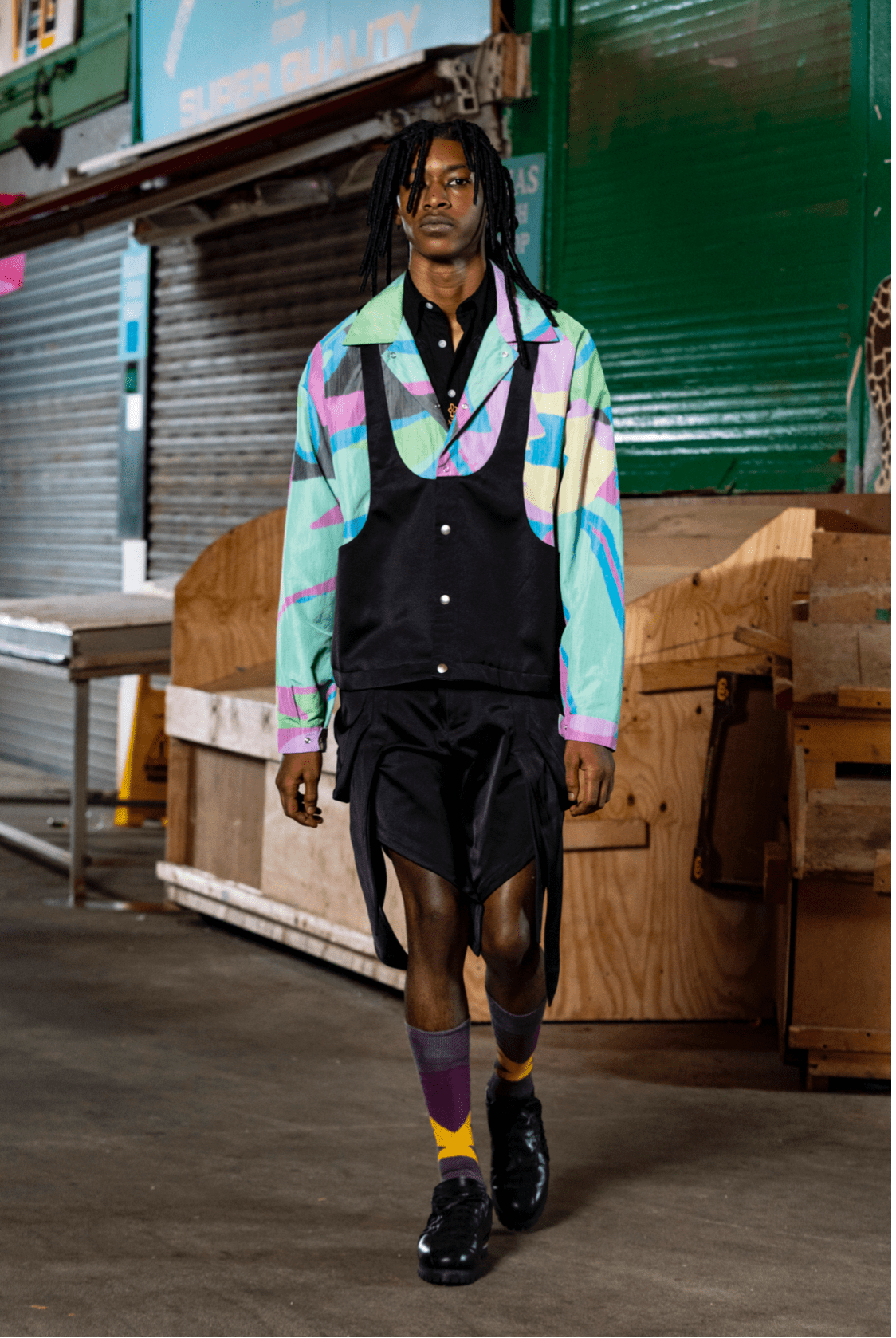
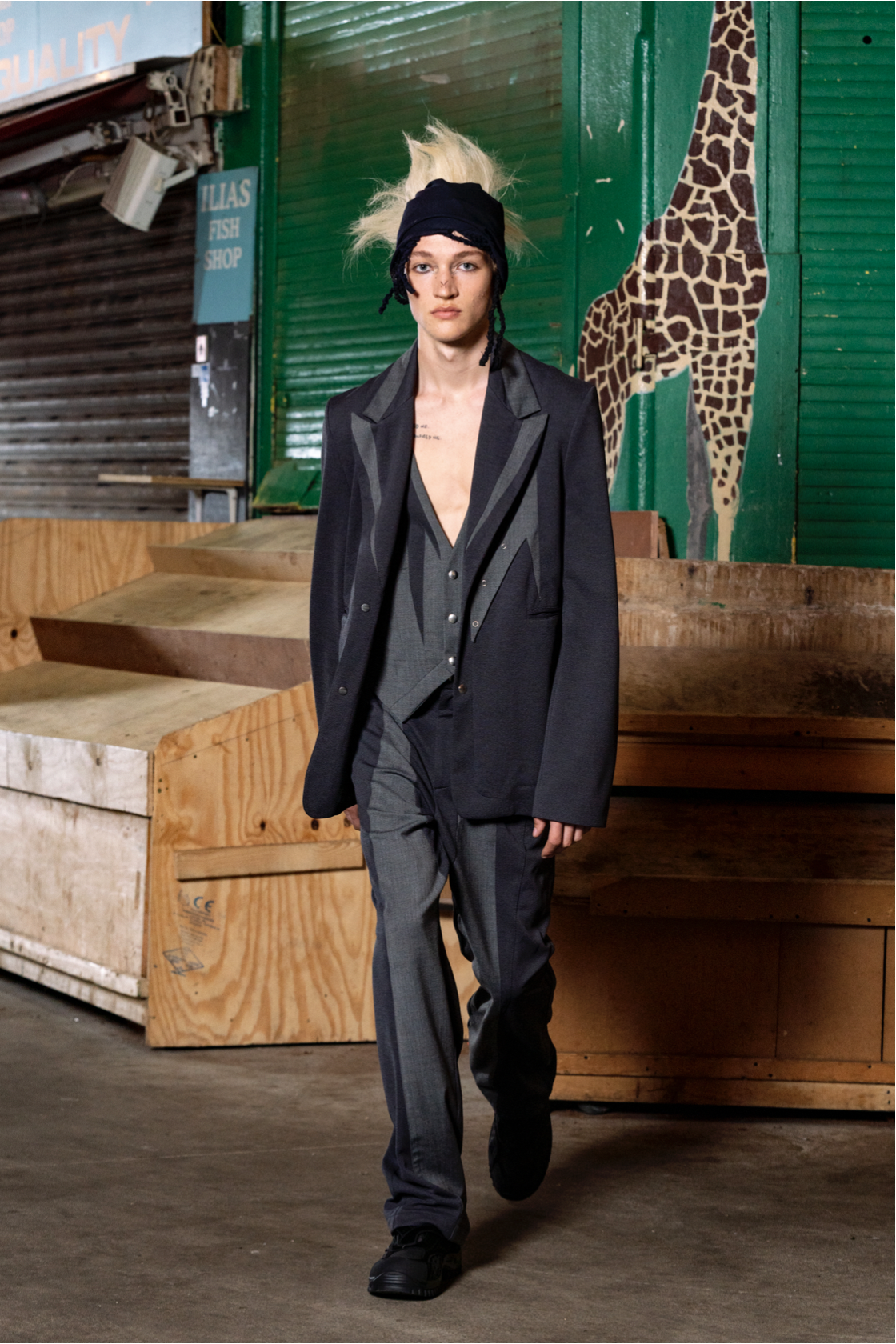
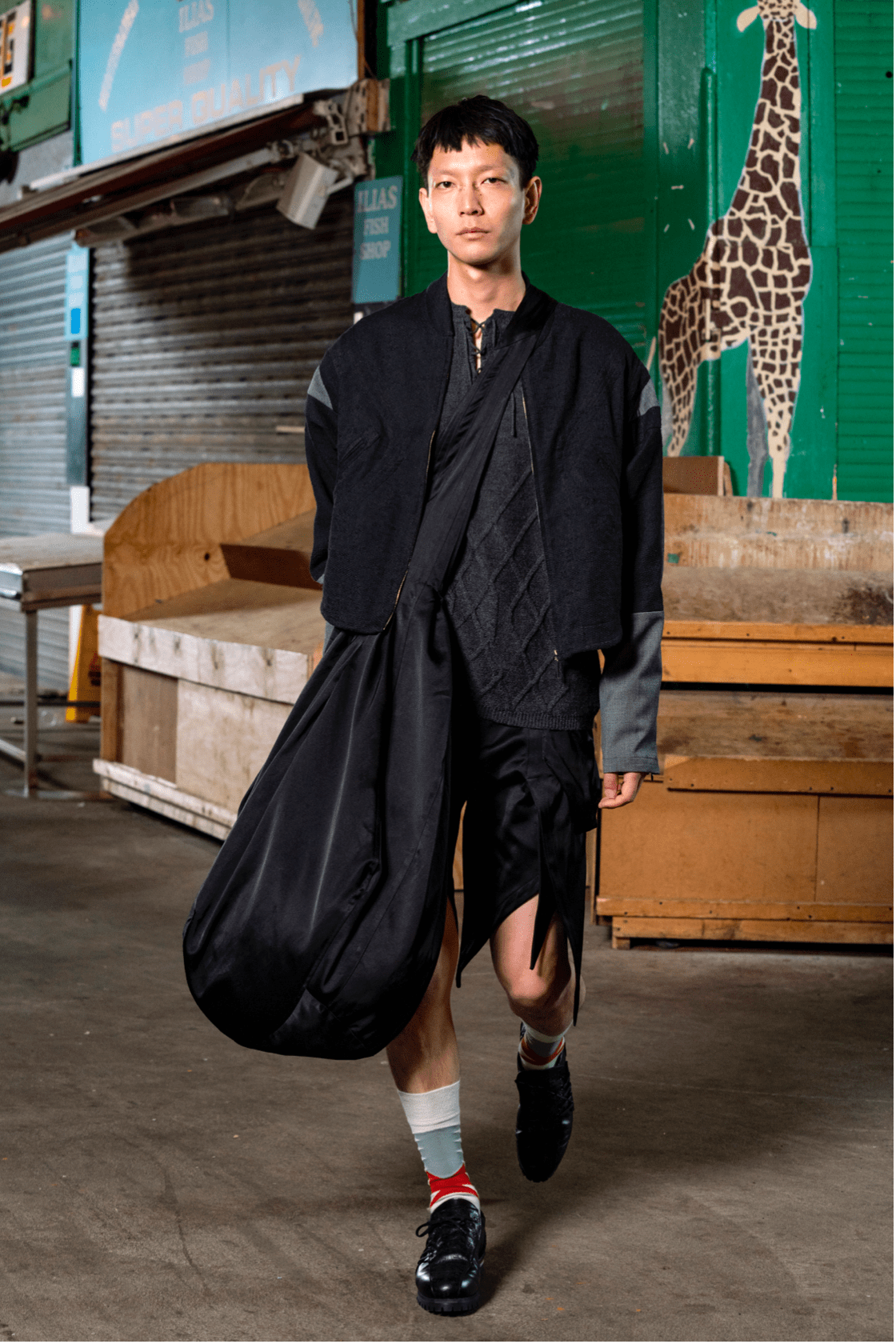
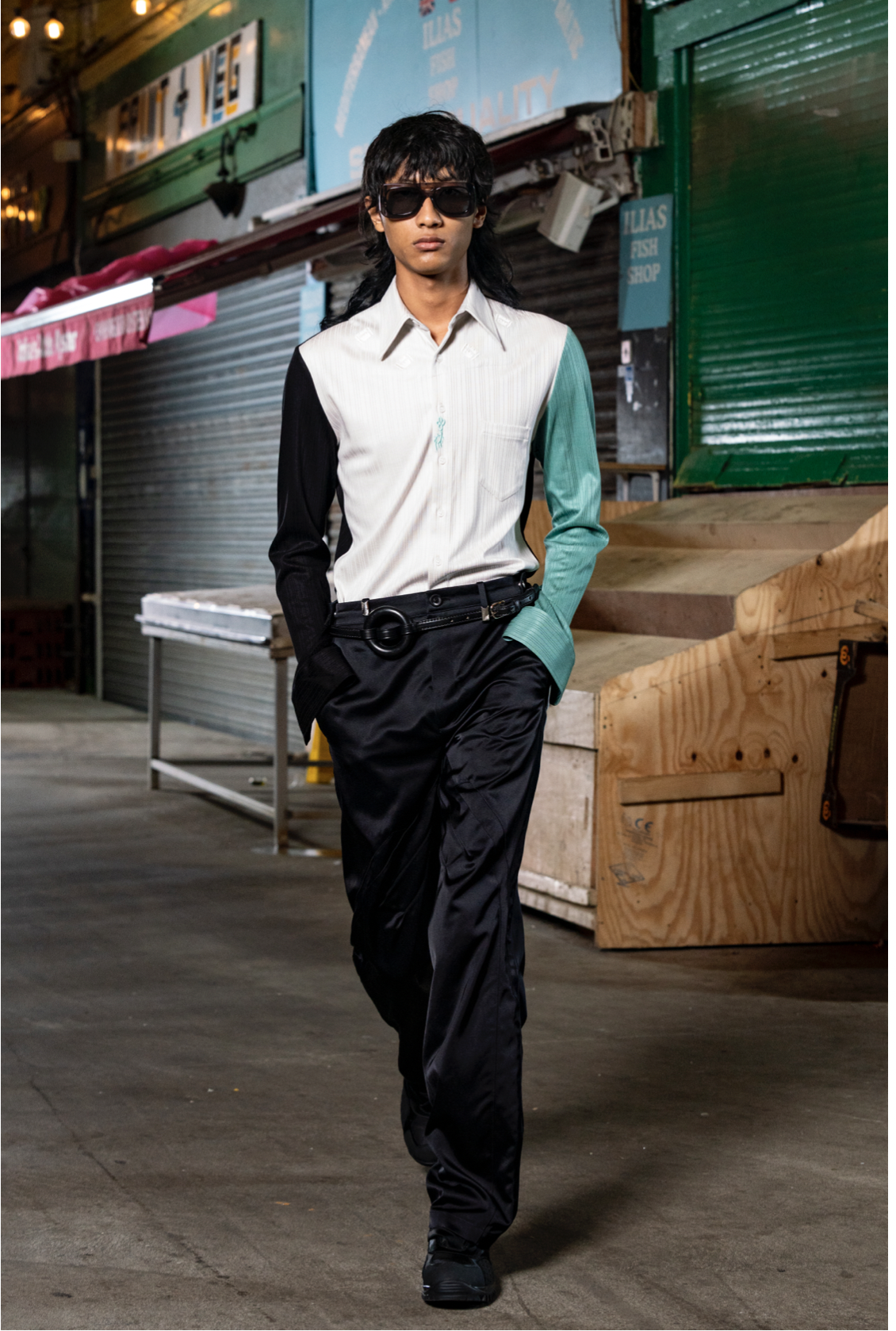
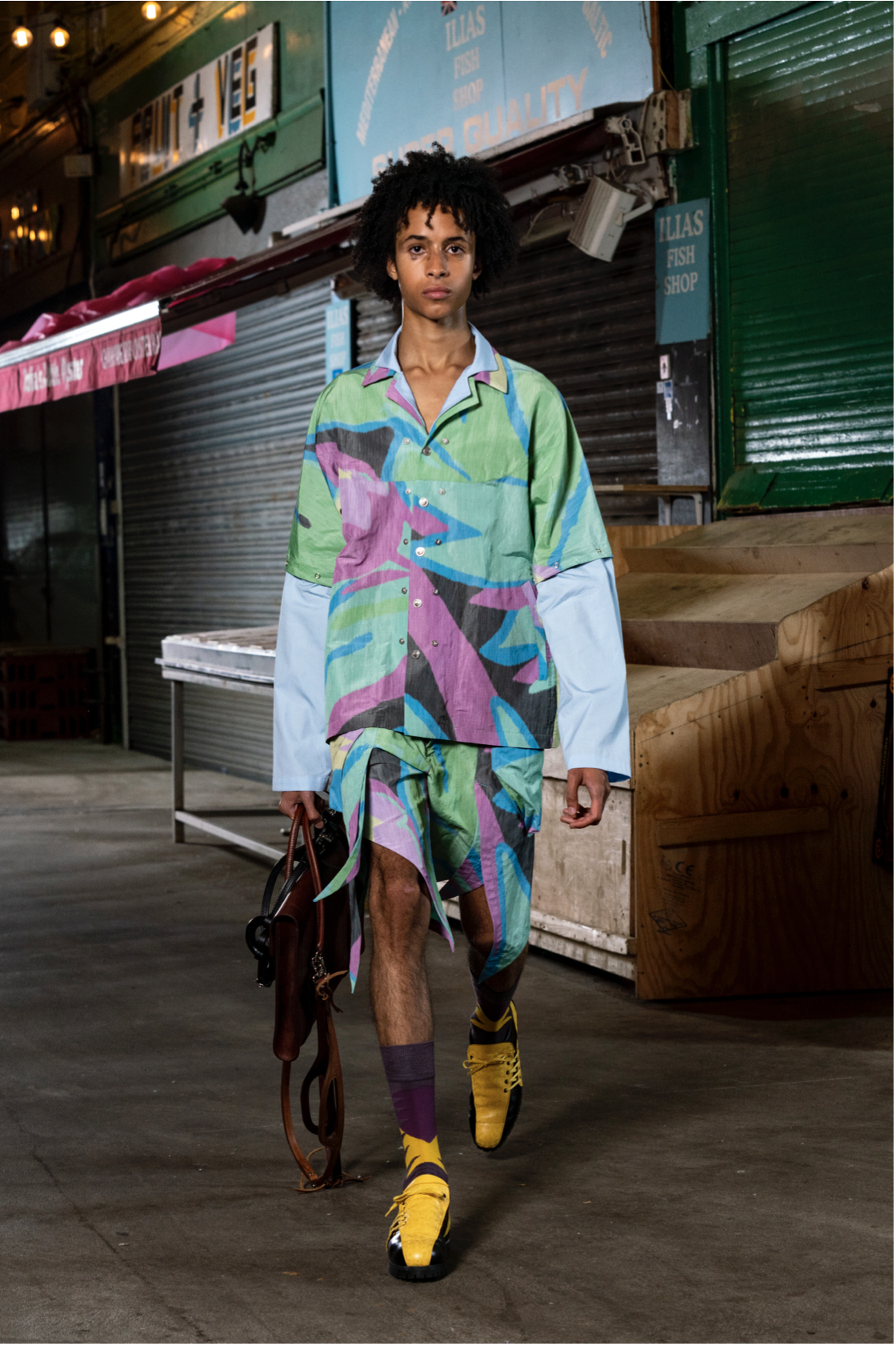
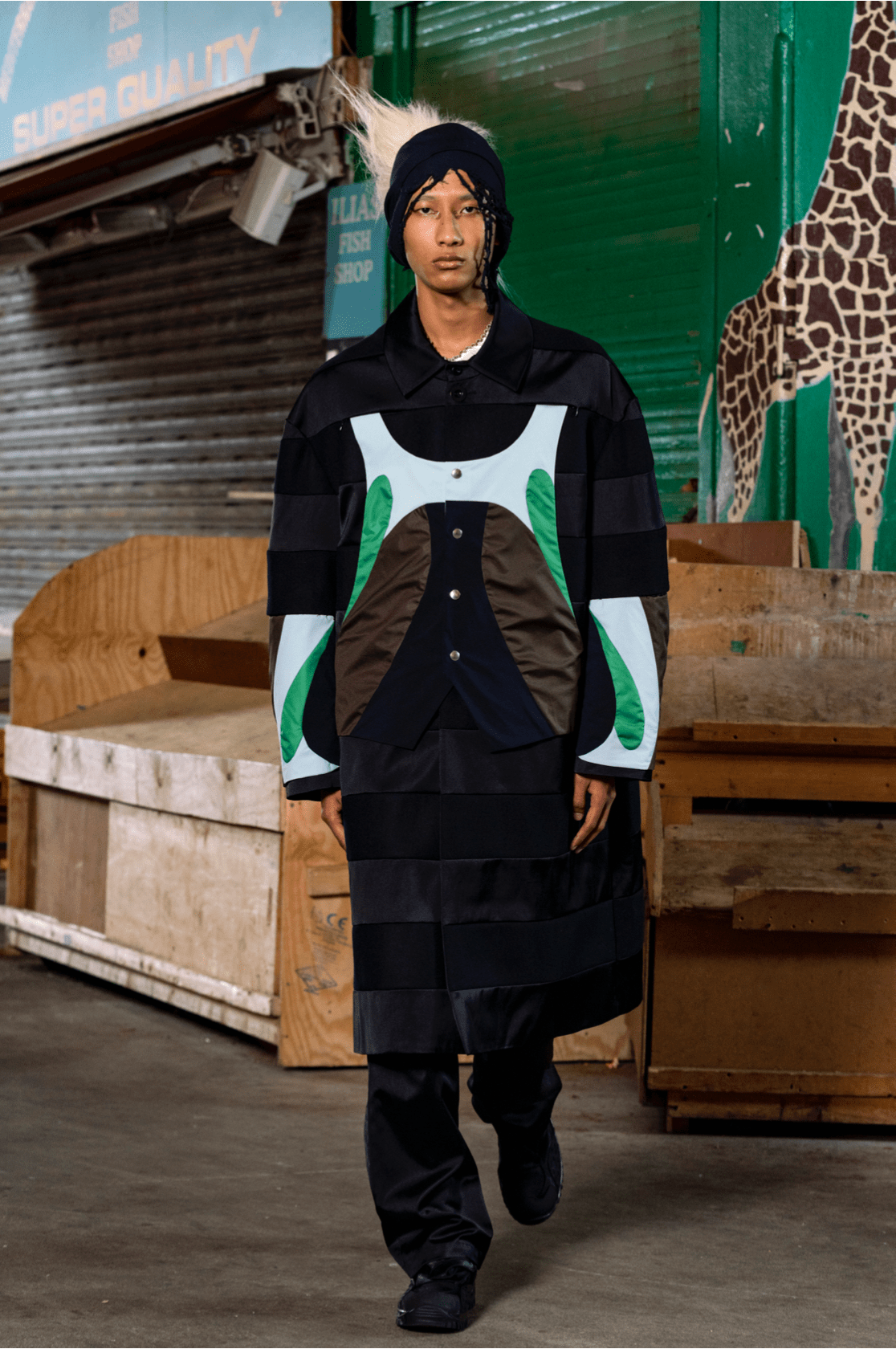
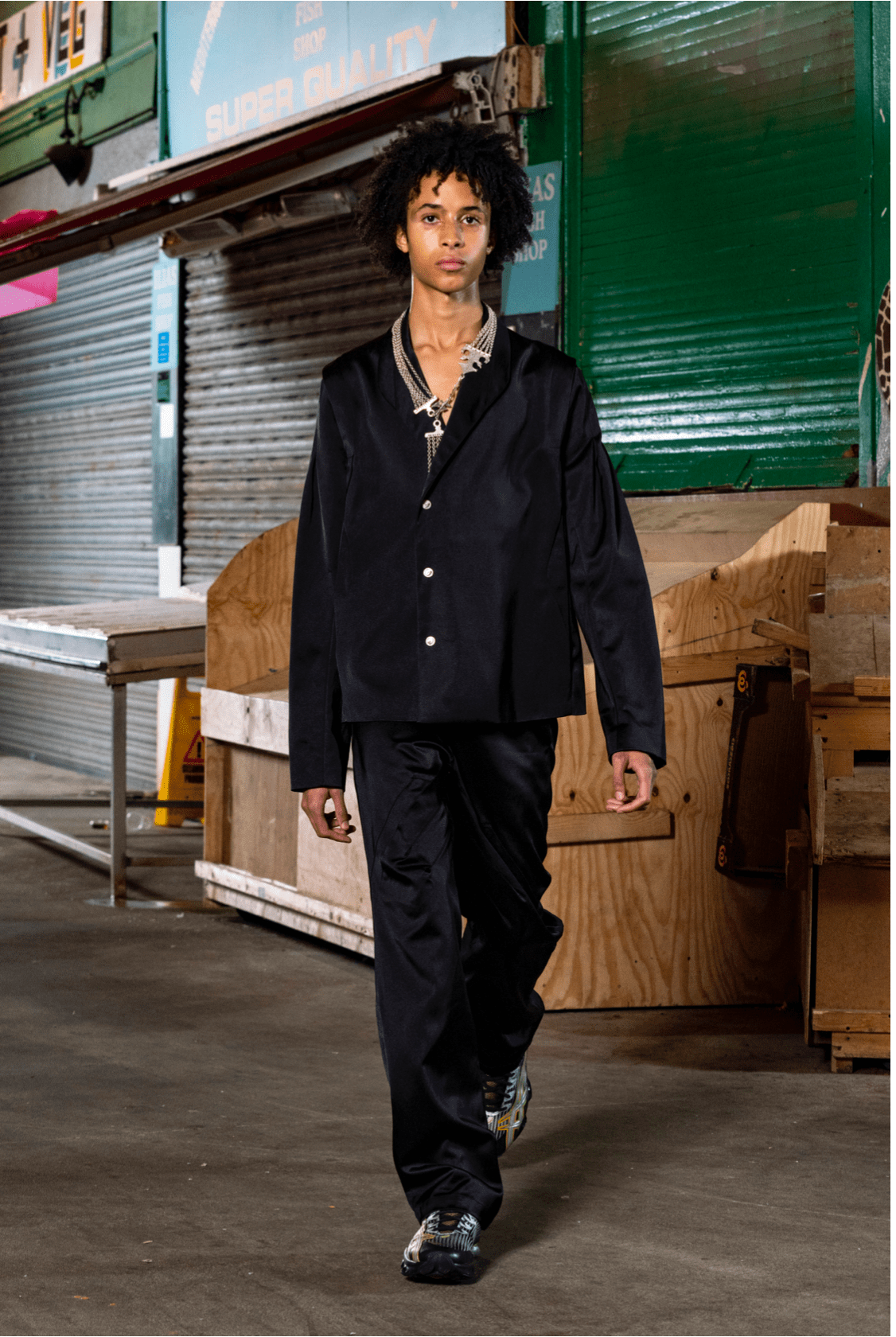
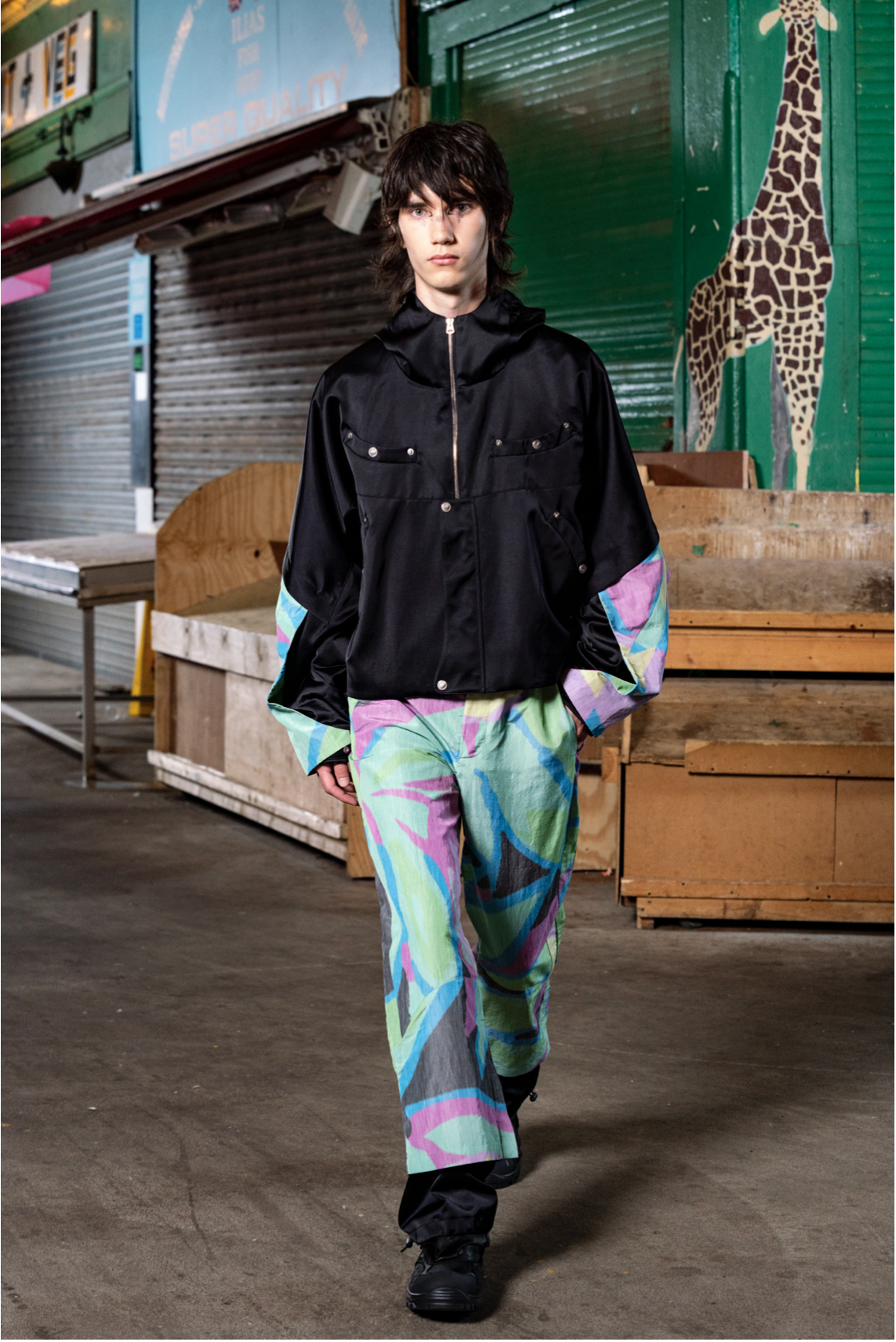
Follow i-D on Instagram and TikTok for more fashion reviews.
